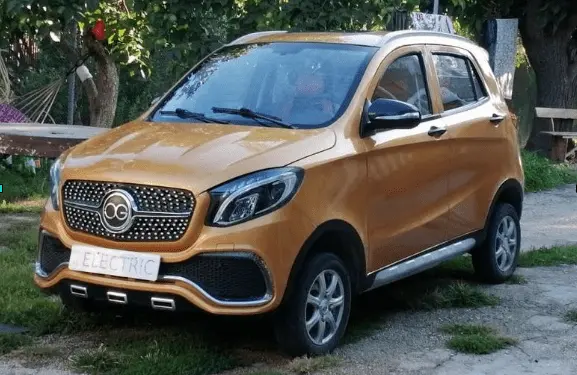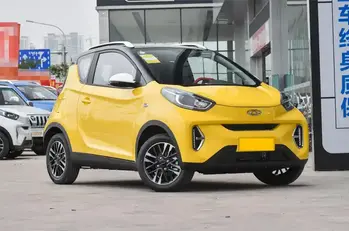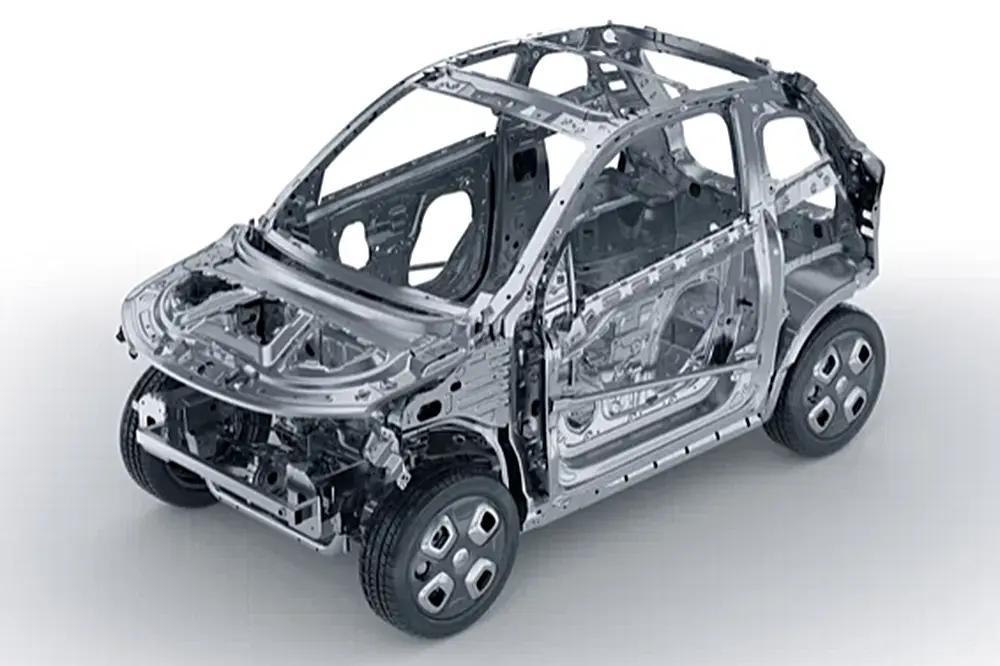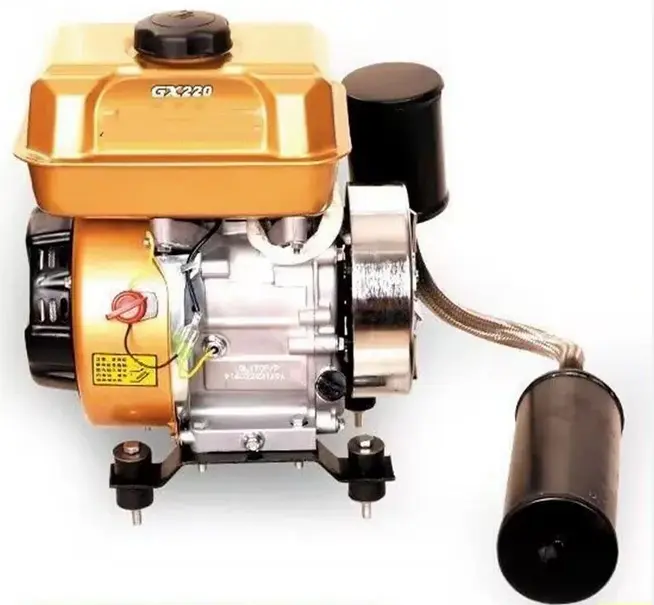
This review is of the Gaia Mini SUV, sold under various model names by Gaia New Energy Shandong.
I should first emphasise that the car was ordered directly from Gaia – not an agent – to open a dealership, which would be the first and only dealership for affordable electric cars in my country, we decided to order a Gaia Solar New Energy Mini SUV model G-Benz as a demonstrator, and show car.

We had a long chat with Gaia on WhatsApp which resulted in an agreement to sell their cars in our country and the requirements were discussed at length. Gaia had two versions of the GBZ-X8. One was 2 years old and then there was the latest version. Well, it’s no good starting a dealership with a 2-year-old model when there is a new model out. So to ensure we got the latest model we sent their own literature to them with the order. We were quoted 15 days for the car to be built to our order with all accessories including air conditioning, roof-mounted solar panel and internal 5kW generator. Shipping would take a further 10 days or so. With the generator, it is impossible to run out of battery charge as at 70% remaining, the generator automatically starts and recharges the batteries. This is also useful for hill climbing as the generator gives that bit extra power when needed.

As it was the latest model, the car was being made to order we were told. In the event, the 15 days promised did not materialise and in fact, the car was not ready for 21 days. This was further delayed when we were told that the car had been delivered to the seaport but would not be loaded until ten days later. The 10-day sea journey turned out to be even longer with the car finally delivered at our seaport after almost 3 months wait from order to delivery.

One might have hoped this was finally the end of the problem but not so. Further delights were yet to come. On opening the 20ft container it was immediately apparent that Gaia had sent the wrong model. Unfortunately, there was no turning back as the car was here and had to clear customs. The car ordered was the latest model which had a new front panel, normal stick-shift, running boards and a new dashboard and instrument cluster apart from other changes.

The car was taken to the compound gates to receive its temporary registration plates for travelling to our workshops but this was when we discovered that not only had the wrong model been sent, but there was no VIN stamped on the body as we had requested – only a removable plastic VIN which did not comply with regulations. This prompted a full-scale search of the vehicle by customs officers. We were not surprised when it was discovered that instead of the 4 KW electric motor advertised by Gaia, our car had been fitted with a 3.5 kW motor.

This again led to further complications. The legalities are that from 4kW upwards, the car is regarded as a car. What does that mean? Well, it means that below 4 kW – 3.5 kW as sent to us by Gaia – it isn’t a car. We were not due to the tax exemption for the import of an electric car. This brought about a fortnight of wrangling with customs which ended in a bill for 1000 USD for import of private goods rather than the electric car we had bought.
As this was now not a car in the eyes of the law, we were unable to obtain registration plates so the “car” could not be driven on intercity roads. Main arterial roads were denied to us.
We discovered that the car can still be used as a city car as these types of vehicles require no registration provided they are used solely within a municipality. Of course, looking every bit like a real car provides hours of enjoyment in dealing with police who want to know why there are no registration plates.
Our joys were not yet over.
The car had to be delivered at great cost to our workshops by low-loader, due to not being allowed to drive on intercity roads from the docks to our city – a distance of some 400 km.

At our workshops, a complete checkover of the car ensued.
- We discovered that the 3.5kW motor had been matched to a different ratio axle so that despite Gaia’s claims of 50-55 kph, the car only does a maximum of 40 kph whilst indicating 55kph on the speedometer, at which point the motor controller limits further speed.
- The radio did not work.
- The radio antenna had also been removed in order to fit the solar panel
- The solar panel did not work
- The rubber gaiters fitted to the steering rack were both perished and falling to pieces
- The generator would not start
- The charging cable was missing
- The door seals were badly fitted and leaked
- One daytime running light built into the headlamps did not work
- One rear door handle was broken and the door could only be opened from the inside.
- The tracking of the front wheels was so badly out of adjustment that part of the tyre tread was worn away in the first 20 kM
- The parking brake was not lined up with the ratchet teeth and would not hold the car. (very important as there is no other means to prevent the car from rolling away when parked, except by placing stones behind the wheels).
- There was no operating or any other type of paperwork with the vehicle.
- There was a very poor cheap scissor jack supplied which collapsed on first use.

Build quality is poor with many comments on the poor paintwork which appears to have had no more than one coat. The front apron which is plastic appears not to have been primed before painting as the paintwork soon bubbled and has literally fallen off in many places showing the bare brown plastic underneath.

The seat material is very thin vinyl which wore through in places within a few months. Although the car has had little use, the seat stitching has come apart. showing a backing material with an extremely thin coating of vinyl. The rear seat folds forward but as there is no means of securing it either in the up or down position, it is dangerous in an accident and constantly tips into the footwell when folded down. The seat back is of the same thin material as the seats and can support no weight when folded down.
The charging cable which should have been with the car (obviously) had been omitted, so a temporary means of plugging in a charging cable had to be configured. On inspection, the 220V cable from the socket on the car, ran straight through the rear spring coils on the right hand rear suspension. If the coil spring was compressed the cable would have been sheared.

The radio surround is no more than a simple black metal frame which looks rather agricultural and is held on with 4 self-tapping screws at the sides. As mentioned earlier, apart from the fact that the radio itself was faulty, the radio antenna which normally sits on the roof had been removed (the internal wiring for the antenna was still in location), and the solar charging panel which also did not work, has been glued to the roof over the surface where the radio antenna normally sits.

The air conditioning system has two controls which are presented on a small plastic panel. This panel is simply screwed on top of the original panel and looks like a job which a very bad handyman would have done.
The rear door is fitted with a kind of spoiler at the top and this was scraping on the roof whenever the door was opened.

The interior door handles are flash chrome plated on white plastic which is also of very poor quality and breaks easily. The chrome can be rubbed off in places by simply rubbing with a finger for a few minutes
On testing the car on an initial drive, we found that the speedometer was reading correctly as advertised – 55kph and occasionally 60kph. This seemed fine until our following service car told us that we were driving at no more than 40kph. When we looked into this we found that not only had the car been fitted with a 3.5kW motor. However, a 4kW motor was advertised, for which the speedometer was not designed and this was coupled with a rear axle geared for the 3.5kW motor, providing an incorrect gear ratio for a 4KW motor.
Gaia was contacted and the service manager told us that he knew that some cars had been produced with the incorrect axle and motor but that he was not prepared to do anything about the mistake. He commented that we should have mentioned all of this when the car was delivered. We HAD mentioned all of the problems on delivery and a report was sent to Gaia on company letterhead, which did not result in any reply, but the inference was that as we had a car from them, that was the end of the story as far as Gaia was concerned. We were told that the lady who had been our contact no longer worked for Gaia. This is untrue as she is still working for GAIA on Made in China to this day.
Driving the GBZ-X8
Had we not been coloured by the poorly made and poorly finished incorrectly supplied product, we might have found driving the GBZ to be a pleasure. The steering is positive and the car holds the road like a sports car. The fact that the speedometer shows 55 when doing only 40 is quite a put-off. Especially when the 40 is your top speed.
The wheel tracking was found to be way out and scrubbed the outside of the tread off in the first 20km of testing the car. The test run was over a slightly mountainous road to the next town and the batteries held up well, but due to the incorrect motor (3.5kw instead of the 4kw on the specification sheet), the car stopped 3 times due to an overheating motor and had to be rested each time until the motor cooled off. The 3.5 motor is certainly insufficient power for a car weighing in at 800 kg and designed to carry 4 people.
I would have engaged the range extender to help with the hills, although the motor would still have overheated. However, we found that the range extender didn’t work. This was found to be a carburettor issue which was fixed a few days later. We left the car in the sun to see how well the solar panel on the roof recharged the batteries only to find that the solar panel – an extra we had paid for – didn’t work either.
Oh well, let’s have a bit of music whilst we physically check out the car. No? No of course not. The radio didn’t work. It came on whenever we turned on the power, but couldn’t be turned off and the volume level could not be changed. So we tuned in to a radio station. No stations? No antenna. The antenna which sits on the roof had been removed to fit the solar panel, and no alternative antenna had been fitted. The antenna cable was still inside the headliner but not connected to anything. The sound from the radio via a memory stick plugged into the radio was horrible. There were two cheap 4 inch loudspeakers joined together by a small nut and bolt and then held by one corner, under the dash although speaker grilles were in the doors and had not been used. There were no speakers in these.
On asking the agent online why the antenna had been removed, we were told matter-of-factly that it was necessary to remove the antenna or how else could they fit the solar panel?
On closing the doors, the window glass, which was loosely held when the windows were down, rattled very noisily. There are two ventilator outlets on the very cheap-looking dashboard which rattled around and could not be adjusted due to their looseness.
When travelling over rough ground, the steering made a worrying rattle, and we found on inspection that a universal cross joint mounted near the pedals was actually loose and making a dreadful noise. It cannot be adjusted as there is no provision for this and had to be replaced.
Whilst looking for the source of the steering rattle, we found that both of the dust gaiters on the steering rack were perished and literally falling to pieces. We have no idea why this should be on a new car.
A great source of worry was that the handbrake didn’t hold the car on virtually any incline and we noticed that there was no sound of a ratchet gear when engaging the brake. A look at the brake lever involved the removal of the centre console which is a rather difficult job. The ratchet pawl, rather than engage the ratchet teeth, was actually beside the ratchet teeth meaning that it was not in line with the ratchet teeth. Consequently,, and it simply didn’t engage at all. The reason for the great concern over this, is that this is the ONLY way to prevent the car from running away by itself as being electric, there is no gearbox or compression from an ICE to hold the car as an alternative. We resorted to chocking the wheels with rocks until we got the car into the workshop for a handbrake repair.
The seats are covered in a very poor, thin vinyl material which is badly sewn and the seats are badly stuffed with insufficient plastic foam. There is no means of securing the rear seat, either in the up or down position and the covering of the back of the rear seat is so thin without any internal padding or support, that nothing can be set directly on it in the down position for fear of tearing the material. We had to resort to laying a sheet of plywood over the eat before we dared put anything into the back of the car when using it for transportation.
Interior door handles are made from a cheap plastic and one of these didn’t work on arrival. Another broke off within a week of use. They are also flash chrome plated and rubbing the home vigorously with a finger removes the chrome showing white plastic underneath.
Overall, the “quality” – and I use the term loosely – of the car is very amateur. Certainly not a product of a real electric vehicle manufacturer.
Gaia Solar Service. What service?
Although Tony, the Gaia Service manager has admitted that several cars had been produced with an incorrect axle and motor, which is why ours has a 3.5 kW motor, he has refused to do anything about the mistake and has only offered to source the correct gears for the rear axle ratio – but only if we paid for the purchase and delivery. In practice, the gears are not changed in the factory. A rear axle comes with the correct ratio gears and a different motor designed to be used with that axle. Ours simply had the wrong axle assembly fitted to the car.







